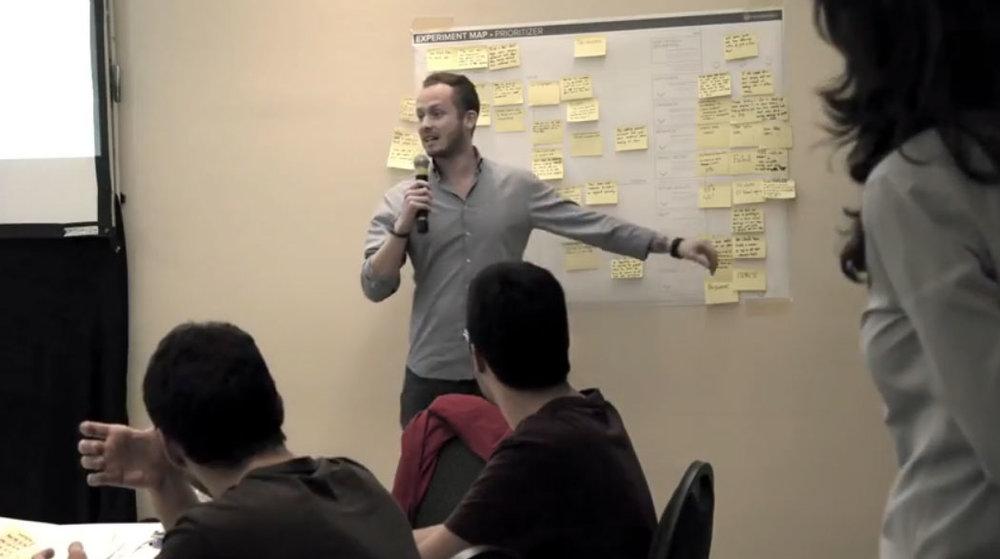Schibsted Media Group Case Study
Founded in 1839, Schibsted Media Group is a Norwegian media group with operations in 29 countries, the most important being Norway and Sweden. With 6,900 employees, Schibsted aims to become a global leader in online classified marketplaces.
Download this case study to save for your records or to show to your leadership team here:
Challenge:

A giant problem in media (and in every industry, really) is that in many organizations, there’s not enough time and space created for employees to engage with customers on a consistent basis. But, without having regular customer empathy, companies miss out on collecting valuable insights from the people they are aiming to serve.
This disconnect leads organizations down the wrong path toward producing products and services that no one really wants, because they aren’t using evidence (data + insights) to guide their product development. In those types of organizations, most decisions are made by the HIPPOs in the room (Highest Paid Person’s Opinion), but are not informed by the goals of the customer, which on a good day may lead to waste, on a bad day, can lead to complete corporate collapse.
And the current digital landscape doesn’t help this situation. In fact, our new ways of digital communication amplify the problem because as a result, organizations have been further removed from the conversation, which makes it even harder for them to gain a deep understanding of their customer.
In the case of Schibsted, as digitization was increasing the speed of change in the media industry, they knew that they needed to work harder to get employees to validate new ideas with customers rather than with their bosses.
And that’s where this story begins.
Action:
In order to determine a plan of action, we met with their Bom Negocio leadership team in Brazil to discuss a number of items:
-
How frequently they were interacting with customers,
-
How long it has been taking to bring products to market,
-
How important business decisions were being made: were they typically made based on evidence? Data? Opinion?
From that information, we were able to assess their current strategy and plan out what a couple of sprints might look like in order to help employees and leadership understand the Lean Innovation process and increase the frequency of making decisions based on evidence.

“When you go out and talk to [customers], you end up finding out interesting things and making new discoveries that you hadn’t imagined before.”
What’s an Innovation Sprint?
An innovation sprint is a 3-5 day intensive, experiential engagement that focuses on teaching participants Lean Innovation methodologies while making impact on real business issues.
Participants work in teams of 3-5 and actively applying design thinking, lean startup, and agile development to new and existing product or market endeavors. These sprints can be applied anywhere in a business, from innovation teams to product launch teams to support functions like marketing, finance, IT or legal — anywhere there is uncertainty.
When we perform a sprint, the goal is to create a high energy, competitive experience that creates an environment where the results of working in this “new way” can be felt, observed, and internalized immediately.
These hands-on experiences drive behavior change because the impact of the work can be witnessed in a short period of time, and all objections, whether about interacting with customers or the difficulty that might be encountered when attempting to shift behavior can be addressed and promptly squashed.
During a sprint, teams make rapid progress on internal or customer-facing challenges, develop customer empathy leading to insights that provide competitive advantage, and expose, prioritize and validate or invalidate assumptions which ultimately saves time, money, and resources when the process is applied to real-world challenges.

Outcome:
Immediate results:
Since our initial meeting, Schibsted have implemented a number of innovation programs including the Lean Innovation workshop and the Lean Enterprise Accelerator Program.
Furthermore, innovation catalysts have been identified and received the “Train the Trainer” certifications to help scale innovation internally.
After accelerating a newly formed cross-functional team over 3 months, the Bom Negocio classifieds subsidiary tested a new delivery service, which is forecasted to increase revenue, user engagement and customer satisfaction. Certified internal coaches are now mentoring other teams.
Watch this video for more information about their Lean Innovation experience:
Long-Term Gains:
Since our last engagement, Schibsted has integrated this new way of working into most of their agile sprints. Now, every website change or product update is expected to have data and evidence to back it up. Not only that, but the company has continued to experience rapid growth and is currently training new employees on these very methods.
>>>>Save this case study for future reference. Download it here.
